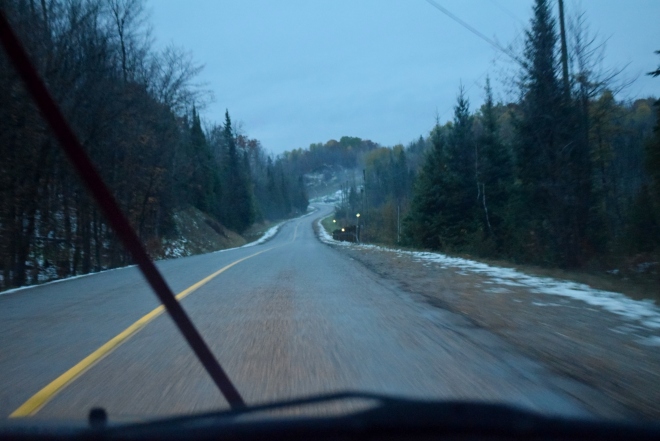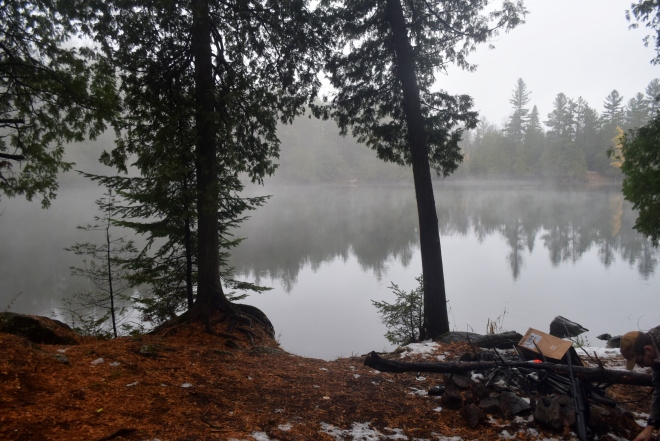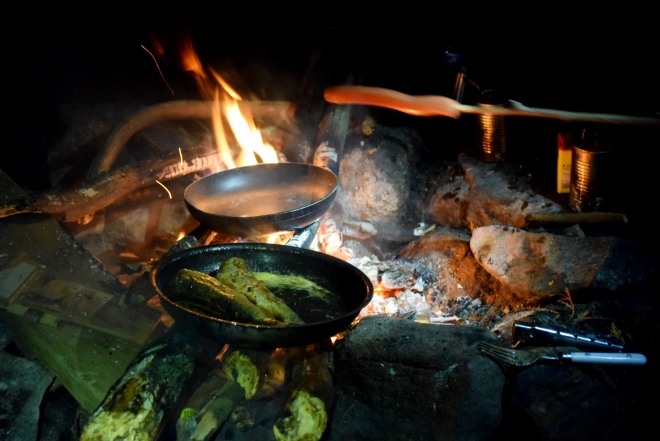At a glance, back country trips can seem mystical and awe inspiring. Photos of your friends or “favourite blogger”… cough.. retracing the steps of explorers and voyageurs long since gone can be mesmerizing. The concept of becoming “one with nature” on these trips, is not only mystical and romantic, but quintessentially Canadian. After all, our country was built on hardy folks who had an unhealthy penchant for spending most of their lives in the backwoods. Unfortunately when it comes time to actually plan one, the weight of the task can leave you feeling inadequate and unconfident. Especially if these sorts of trips weren’t part of your youth.

So how do you go about planning and actually executing one of these trips? I’m sure there are many folks out there who are infinitely more qualified to answer this question, but I’d like to weigh on with a beginners/intermediate’s point of view on the subject. Here is what I have learned.
Have a Good Plan
Decide how much time you want to spend on a trip. Decide where in the province, country, or even world you want to go. Once you have answered these questions narrow down your search to a specific route. In Canada, Canadian Canoe Roots would be your best option. Alternatively you could look up Trails.com for trails in the states. Once you have narrowed it down to a specific route, get your hands on a map of your route showing the path, portages, portage distances, and topography. I’m a big fan of Jeff’s maps http://jeffsmap.com/ . They guy has seen a good portion of the parks in Ontario and has lots of handy notes on his maps. Not to mention they are fairly current, and best of all made available through donations. Thanks Jeff!
If your still deciding on what route to take consider your level of physical fitness when selecting a trip that’s right for you. Consider choosing a trp that is well travelled if your new. There may be others present should you get into a bit of trouble.
Don’t be a hero and don’t bite off more than you can chew. A two day trip may not sound as epic as a week long excursion, but its definitely easier and safer. Every year lots of people decide to head into the woods with very little gear or food expecting things to just work out. News flash, they wont, unless you prepare for it.
Choose Experienced Trip Mates
Personally, I prefer learning by doing and by seeing. So it worked out when I was invited on my first trip by some seriously experienced trekkers. I got to learn the ropes with minimal risk to myself. I recommend this method of grafting yourself onto a trip. I bet there is nothing worse that being in the middle of a trek running out of food and having no idea how your going to get back and no one to ask for help.
Plan Your Meals
Understand what your dietary needs are and pack accordingly. Its important to watch your weight here though, and I don’t mean your waistline. I’m taking weight of your pack. Bringing a case of beer and fresh steaks may work for a 2 day canoe in trip where you don’t mind packing it in, but that wont really fly on a long haul 7 day trip with numerous portages. Your not going to want to haul that crap in or haul the remaining garbage out. Consider meals that are light and full of calories like wraps and peanut butter or oatmeal. Dried meats are a favourite as well. Basically anything that doesn’t require refrigeration and is light. Remember, its not the food that usually weighs a lot, its the water present in your food. Try to avoid bringing meals that contain lots of water and rely more on things like pasta, rice, or oatmeal. They have a high calorie/weight ratio.
Water
Consider how you will get your water. A couple Nalgene bottles wont cut it for a long haul trip. Bring a water filter designed to remove all the lovely bacteria and parasites or use purification tablets/drops. Simply boiling your water wont save you from a severe case of “beaver fever”. Oh and avoid drawing water from swampy boggy areas or from near shore. These areas can be teaming with parasites. If in an emergency you need to drink untreated water, get it from a fast moving stream or from the middle of a deep cold lake.
Gear
Gear needs are tied directly to the trip you plan to take. You’ll need at least: a compass, your map (preferably in a water proof case), fire starting equip, pack, sleeping bag, therma-rest or sleeping pad, water filtration or purification equip, minimal cooking gear (preferably pots that fit within one another), a stove or way to cook (something light is great like a whisperlite or similar), life jacket (if canoeing), and assortment of medication (ibuprofen, Benadryl, antihistamines, personal meds). A bit of rope and a good knife are never bad things to bring along. Try to minimize gear and reduce redundancies. Discuss equipment with your group to avoid duplicating gear. No need to haul 6 camp stoves in when one will do the trick.
Resist the urge to bring along your favourite axe, clunky propane BBQ, or other gear that has no direct use on trip. Believe me, you’ll only make the mistake of over packing once, especially if you have a few long portages to deal with.
Maintain a dry set of clothes, but don’t bring the whole wardrobe. Accept that you wont have a fresh set of clothes to wear each day unless you pack them in. I keep one set of dry clothes for camp and one for the hard day of paddling and hiking.
Organization
Reduce clutter and loose items. Make sure you reduce items that need to be carried in your hands or that are loose. This makes for easy portages and minimizes lost items. You will tire quickly of having to pick up a ton of crap each time you move. Also, one pack containing all your gear is easer to pick out of the water than a mess of gear if you capsize. As a plus, your pack will likely float minimizing loss of equipment!
Read Trip Reports
Although you may be hoping to experience your very own Lewis and Clark moment once you are in the woods, its likely someone else has been there before. Use resources such as myccr.ca folks on that sit have piles of information for the new adventurer. Don’t forget to use Google and read posts like those you may find on your favourite outdoor blog based in Southern Ontario “wink, wink”. If there is a problem with a trip, someone somewhere is likely to mention it.
Weather
Be prepared for it or plan around it. Remember as nice as a light rain shower is in the summer, the same rain can be deadly if your travelling in cold temperatures. Staying dry is key when the mercury drops.
Stay off the water during thunderstorms or in high winds. Likewise, learn your route and constantly be looking to landmarks that indicate where you are. Stay alert! you don’t want to be the person who misses the portage only to head into a class 5 rapid un-expectantly.
Well that’s my two cents. I’m not a pro by any stretch, but hopefully this information will help you make some good decisions up front about your trip. If I can leave you with one thought its this: don’t be intimidated. This may seem like a lot of things to think about when tripping, but you’ll learn quick. Start small, be eager to learn and humbly take advice for more experienced trippers.
Lastly, and above all else, enjoy the experience.
Cheers from somewhere in the middle of nowhere,
Albert

















































